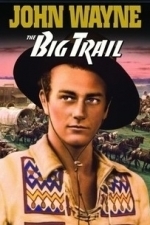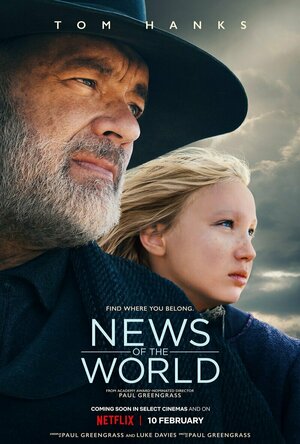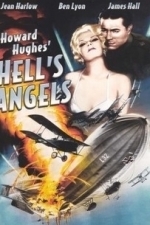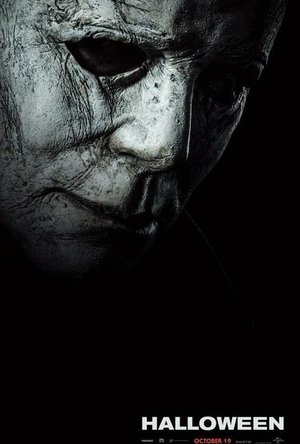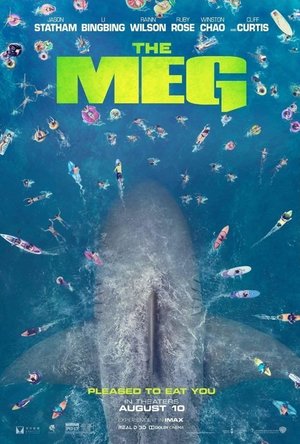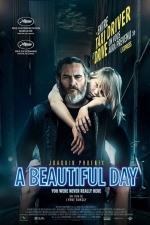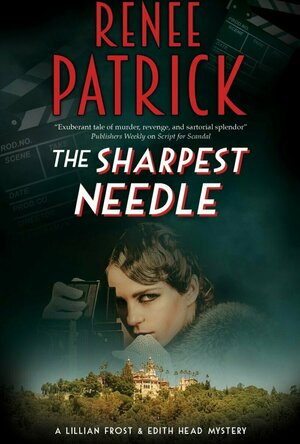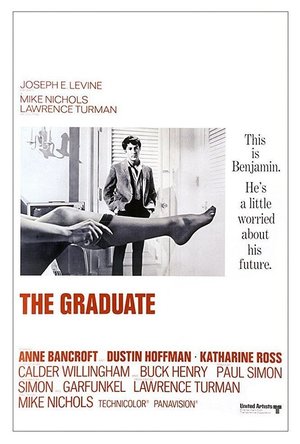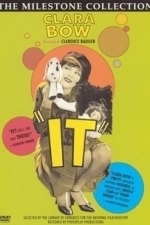Search
Search results
Mark @ Carstairs Considers (2346 KP) rated A Killing Way in Books
May 8, 2025 (Updated May 8, 2025)
Tracking a Painting Stolen by a Dead Man
When famed silent film cowboy William S. Hart hires Nate Ross, he is looking for a portrait that was recently stolen from his home. He even knows who stole it. The catch? The thief was killed in a suspicious accident that has deeply divided the community of cowboy actors. Can Nate navigate the controversy and find the painting?
Since I live in the town that William S. Hart called home, I got a kick out of seeing a couple places I know well show in this historical mystery. The plot and pacing were great, and I had a hard time putting down this PI novel. Speaking of being a PI novel, there is a little more content than I might normally read, but it was a small amount. The characters are good overall. A few could be stronger, but fans will be happy to spend more time with everyone. If you haven’t started this fun series yet, fix that today.
Since I live in the town that William S. Hart called home, I got a kick out of seeing a couple places I know well show in this historical mystery. The plot and pacing were great, and I had a hard time putting down this PI novel. Speaking of being a PI novel, there is a little more content than I might normally read, but it was a small amount. The characters are good overall. A few could be stronger, but fans will be happy to spend more time with everyone. If you haven’t started this fun series yet, fix that today.
RəX Regent (349 KP) rated The Big Trail (1930) in Movies
Feb 19, 2019
“The Indians are my friends…” Breck Coleman – John Wayne
Not exactly a statement that would exemplify the Career of a man rightly or wrongly associated as being the Cowboy of the Cowboy and Indian movies. But there is no doubt that John Wayne was certainly one of the biggest western stars of cinema.
And The Big Trail is where it really begins for Wayne, but this 1930’s classic was a box office failure, coming not only at the dawn of sound film, but at the time of The Great Depression. It would be another decade by the time “The Duke” wold be born and John Wayne would take his crown as the western superstar which we all know today.
But The Big Trail, originally entitled The Oregon Trail, is not really a John Wayne vehicle. He was a relative unknown actor alongside stage talent, many of whom were drafted into Hollywood at this time simply because they could give a decent vocal performance, as many a silent star was falling, failing to adapt the talkies.
But again, sound is not the selling point of this movie. This was one of a handful of films which pioneered the 70mm film format, in this case, Fox Grandeur, or Grandeur 70. A none anamorphic widescreen format, which whilst not the first attempt, nor the first 70mm film format, it was the nearest to which would succeed later.
2oth Century Fox would change cinema in 1953 with the release of the first CinemaScope film, The Robe, a year after the debut of Cinerama, but Grandeur more closest resembles Todd AO, a format which is still technically used today though in a somewhat different way. The secret to CinemaScope’s later success was in many ways the reason for the failure of Grandeur and that was the fact that CinemaScope was an anamorphic process, screening the image from a regular 35mm film and expanding with the lens, therefore making it a lot cheaper to adapt existing projectors and auditoriums.
Grandeur on the other hand was a larger film format and required a complete upgrade to theatres and therefore, especially at the dawn of the depression era, was financially untenable. Only two theatres in the U.S. would ever show this film in its widescreen glory, with rest showing the alternate 35mm Academy version.
And this film, had SIX versions shot simultaneously, in four different languages, 35mm and 70mm, each requiring different takes with different cameras or casts. This was an incredible feet but one which would soon be reduced with the use of audio dubbing, subtitles and ability to pan and scan.
The problem with this film is simple. It has a loose plot but no real twists and turns. This is almost a documentary following the wagon train trail across the west as group of pioneers make their way to the better life and building the United States, or at least personifying the romantic version of it.
But the film’s pacing and visual style works best through the widescreen lens, a beautiful journey with the untamed west as backdrop, but this is not the the version that most people have seen. The majority only saw the 35mm version which is 20 minutes shorter, edited more quickly and simply doesn’t have the visual flare of the Grandeur version. And without this vast visual canvas, the thousands of extras and props are almost cut from the film, a film with now feels a bit pointless and bit wayward.
Starring an unknown, though despite his hammy acting, Wayne manages to hold his own, the pacing is rushed and the fact that this is an epic journey which we are embarking on with them is somewhat lost.
The widescreen version’s main failing is the sound, which is inferior and poorly mixed in comparison to the 35mm cut, which is crisper and louder, but sound was never going to this movie’s strength and it was still rudimentary at this point. But on a visual level, considering the age of the print, the cinematography is up there as being some of the best, with scale and dare I say, “grandeur” about it.
This is an interesting film to watch now, though unless you are a strong western fan, I would say that it will not thrill, though as a peace of cinematic history, it is littered with footnotes and it very watchable.
And The Big Trail is where it really begins for Wayne, but this 1930’s classic was a box office failure, coming not only at the dawn of sound film, but at the time of The Great Depression. It would be another decade by the time “The Duke” wold be born and John Wayne would take his crown as the western superstar which we all know today.
But The Big Trail, originally entitled The Oregon Trail, is not really a John Wayne vehicle. He was a relative unknown actor alongside stage talent, many of whom were drafted into Hollywood at this time simply because they could give a decent vocal performance, as many a silent star was falling, failing to adapt the talkies.
But again, sound is not the selling point of this movie. This was one of a handful of films which pioneered the 70mm film format, in this case, Fox Grandeur, or Grandeur 70. A none anamorphic widescreen format, which whilst not the first attempt, nor the first 70mm film format, it was the nearest to which would succeed later.
2oth Century Fox would change cinema in 1953 with the release of the first CinemaScope film, The Robe, a year after the debut of Cinerama, but Grandeur more closest resembles Todd AO, a format which is still technically used today though in a somewhat different way. The secret to CinemaScope’s later success was in many ways the reason for the failure of Grandeur and that was the fact that CinemaScope was an anamorphic process, screening the image from a regular 35mm film and expanding with the lens, therefore making it a lot cheaper to adapt existing projectors and auditoriums.
Grandeur on the other hand was a larger film format and required a complete upgrade to theatres and therefore, especially at the dawn of the depression era, was financially untenable. Only two theatres in the U.S. would ever show this film in its widescreen glory, with rest showing the alternate 35mm Academy version.
And this film, had SIX versions shot simultaneously, in four different languages, 35mm and 70mm, each requiring different takes with different cameras or casts. This was an incredible feet but one which would soon be reduced with the use of audio dubbing, subtitles and ability to pan and scan.
The problem with this film is simple. It has a loose plot but no real twists and turns. This is almost a documentary following the wagon train trail across the west as group of pioneers make their way to the better life and building the United States, or at least personifying the romantic version of it.
But the film’s pacing and visual style works best through the widescreen lens, a beautiful journey with the untamed west as backdrop, but this is not the the version that most people have seen. The majority only saw the 35mm version which is 20 minutes shorter, edited more quickly and simply doesn’t have the visual flare of the Grandeur version. And without this vast visual canvas, the thousands of extras and props are almost cut from the film, a film with now feels a bit pointless and bit wayward.
Starring an unknown, though despite his hammy acting, Wayne manages to hold his own, the pacing is rushed and the fact that this is an epic journey which we are embarking on with them is somewhat lost.
The widescreen version’s main failing is the sound, which is inferior and poorly mixed in comparison to the 35mm cut, which is crisper and louder, but sound was never going to this movie’s strength and it was still rudimentary at this point. But on a visual level, considering the age of the print, the cinematography is up there as being some of the best, with scale and dare I say, “grandeur” about it.
This is an interesting film to watch now, though unless you are a strong western fan, I would say that it will not thrill, though as a peace of cinematic history, it is littered with footnotes and it very watchable.
BankofMarquis (1832 KP) rated News of the World (2020) in Movies
Jan 17, 2021
Strongly Acted and Directed
Pound for pound, Tom Hanks is the best actor of this generation. From his big screen debut in SPLASH to his Oscar Nominated turn in BIG to his back-to-back Oscar wins for PHILADELPHIA and FORREST GUMP to more recent works like SULLY and THE POST, Hanks’ “everyman goodness” quality shines through the screen and makes him a screen presence that cannot be ignored.
And in his latest effort, the Paul Greengrass Directed NEWS OF THE WORLD, Hanks uses every molecule of his screen presence to keep the audience’s attention in a slow-paced, moody character study.
Based on the novel by Paulette Jiles, NEWS OF THE WORLD takes place in a post-Civil War Texas where a former Confederate Captain makes a living by going from town to town and reading the news to them. A chance encounter with a twice orphaned young girl alters the lives of both of them.
Writer/Director Paul Greengrass is most known for quick-cut action films like the BOURNE series or the criminally underrated GREEN ROOM, so he would seem - at first glance - as an unusual choice to adapt and direct this character study, but look further at Greengrass’ resume and you will find - in films such as UNITED 93 and CAPTAIN PHILLIPS - an ability to tell a story that is driven more by character than by action.
And this combination of Director and Actor works well for NEWS OF THE WORLD is a languidly paced piece that has a somber mood and look but Greengrass avoids the temptation of lingering on scenes or pictures too long (and there are some wonderful images captured by Greengrass and Cinemotgrapher Darius Wolski) to tell a story of a man who needs to rediscover and remake himself.
And Hanks is more than equal to the task of bringing the pragmatic, introspective Captain Jefferson Kyle Kidd character to life in a way that makes him intriguing and not boring. Hanks ability to show inherent decency in a look or a gesture is the stuff of legends and when he speaks, you listen. Which is good for Hanks is in every scene in this film and his performance needs to strongly capture the audience for this film to work - and he is more than equal to this task - so strong is Hanks in this role that I would not be surprised if there is another Oscar nomination in Tom’s near future.
Newcomer Helena Zegal is “just fine” in the other main role in this film - the young girl that Captain Kidd encounters, Johnna. This young girl is silent and shut down for most of the film and Zegal performs “shut down and silent” well. Also along for brief cameo roles of characters that Captain Kidd encounters on his journey is a bevy of wonderfully cast character actors that include Mare Winnigham, Ray McKinnon, Bill Camp and the always interesting to watch Elizabeth Marvel.
As is often the case in these sorts of films, the music/soundtrack becomes a vital part of the story that unfolds and 8 time Oscar nominated composer James Newton Howard (THE PRINCE OF TIDES) is more than up to the task. The music is another character in this film and helps set the mood along the journey.
But make no mistake, this is Hanks’ film - and he is VERY good in this. Like MIDNIGHT SKY (reviewed last month), this movie will not be for everyone - and many, many folks are going to tell me that they checked this movie out on my recommendation and were bored by it. But…if you click into the mood, motion and energy of what Greengrass is showing, you will be rewarded with an emotionally rich and complex character study.
Letter Grade: A-
8 stars (out of 10) - and you can take that to the Bank (ofMarquis)
And in his latest effort, the Paul Greengrass Directed NEWS OF THE WORLD, Hanks uses every molecule of his screen presence to keep the audience’s attention in a slow-paced, moody character study.
Based on the novel by Paulette Jiles, NEWS OF THE WORLD takes place in a post-Civil War Texas where a former Confederate Captain makes a living by going from town to town and reading the news to them. A chance encounter with a twice orphaned young girl alters the lives of both of them.
Writer/Director Paul Greengrass is most known for quick-cut action films like the BOURNE series or the criminally underrated GREEN ROOM, so he would seem - at first glance - as an unusual choice to adapt and direct this character study, but look further at Greengrass’ resume and you will find - in films such as UNITED 93 and CAPTAIN PHILLIPS - an ability to tell a story that is driven more by character than by action.
And this combination of Director and Actor works well for NEWS OF THE WORLD is a languidly paced piece that has a somber mood and look but Greengrass avoids the temptation of lingering on scenes or pictures too long (and there are some wonderful images captured by Greengrass and Cinemotgrapher Darius Wolski) to tell a story of a man who needs to rediscover and remake himself.
And Hanks is more than equal to the task of bringing the pragmatic, introspective Captain Jefferson Kyle Kidd character to life in a way that makes him intriguing and not boring. Hanks ability to show inherent decency in a look or a gesture is the stuff of legends and when he speaks, you listen. Which is good for Hanks is in every scene in this film and his performance needs to strongly capture the audience for this film to work - and he is more than equal to this task - so strong is Hanks in this role that I would not be surprised if there is another Oscar nomination in Tom’s near future.
Newcomer Helena Zegal is “just fine” in the other main role in this film - the young girl that Captain Kidd encounters, Johnna. This young girl is silent and shut down for most of the film and Zegal performs “shut down and silent” well. Also along for brief cameo roles of characters that Captain Kidd encounters on his journey is a bevy of wonderfully cast character actors that include Mare Winnigham, Ray McKinnon, Bill Camp and the always interesting to watch Elizabeth Marvel.
As is often the case in these sorts of films, the music/soundtrack becomes a vital part of the story that unfolds and 8 time Oscar nominated composer James Newton Howard (THE PRINCE OF TIDES) is more than up to the task. The music is another character in this film and helps set the mood along the journey.
But make no mistake, this is Hanks’ film - and he is VERY good in this. Like MIDNIGHT SKY (reviewed last month), this movie will not be for everyone - and many, many folks are going to tell me that they checked this movie out on my recommendation and were bored by it. But…if you click into the mood, motion and energy of what Greengrass is showing, you will be rewarded with an emotionally rich and complex character study.
Letter Grade: A-
8 stars (out of 10) - and you can take that to the Bank (ofMarquis)
RəX Regent (349 KP) rated Hell's Angels (1930) in Movies
Feb 19, 2019
Big budget, elaborate air combat scenes which resulted in several deaths and Gimmick after gimmick… This has to be the Howard Hughes’ World War 1 epic, Hell’s Angels.
Where to begin?
Well, we follow the Routledge two brothers as they join the war effort and the Royal Air Corps. in 1914 and whilst one is a somewhat cowardly womaniser, his brother is the noble heroic type who spends the film being screwed over bey everyone in one way or another, but most notably by his girlfriend, Jean Harlow, who is so annoyingly wrong for him that it is a relief when he has heart is broken by her in the third act.
But like mots aspects of this plot, this is as messy and disjointed as everything else. We are given a story line to follow for two hours, as Hughes indulges his legendary love of flying to create some of the best dog fight sequences ever committed to film. They are real, epic and effective in conveying the thrilling danger of these world war one battles.
But this is a film of gimmick. Pushing the pre-code envelope with sex and bad language, this was originally conceived as a silent movie and was re-written and re-shot to become the sound movie whcih we have to today and there in clearly lies the problem. What we end up is a movie cobbled together, with silence sequences being converted to sound, the poor acting from its star James Hall as the idealistic Roy Routledge, Jean Harlow, replacing the original silent star Gretta Nissen for this sound version, excelling in her role as his trampy girlfriend and Ben Lyon as the weaker brother, Monte, but the real star of this show are the special effects.
But of the human stars, Harlow, presented here in the only colour footage known to exist of the tragic star, who would die at the young age of 26 just seven years later, probably delivers one of the best performances in the whole picture, certainly outshining her male co-stars.
Of the special effects though, the use of 2-tone Technicolor, which was actually shot with the Metrocolor system but processed by Technicolor, in one sequence as the group are all together at a party, as well as the classical use of tints during some other scenes, add a vibrancy to the project. But this also can have a jarring effect, especially as we leave the colour scenes and wrap up thet sequences in black and white.
But the model effects, notably the munition raid at the end and the Zeppelin bombing London scenes are spectacular, especially for the time. The other notable gimmick which has yet to be transferred to the small screen, was the original use of what was called Magnascope back in 1930.
This was obviously only used at high end theaters but this paved the way for what IMAX are doing now, by blowing up the aerial scenes into a larger screen format from the 1.20:1 ratio which the the rest of film was presented. But when you add all this up you have got a mess!
Magnascope, technicolor scenes, tinted scenes, daring aerial battles, a half arsed love story and an image of world war which was a kin to that of Michael Bay’s Pearl Harbor’s (2001) view of World War 2! But this is what this is. An early, lavish popcorn blockbuster, with little to offer but cinematic thrills, which it succeeds at without any doubt.
The action is great, the plot is mediocre to say the least but as film, it does offer a brief insight into how cinema audiences saw the Great War back in 1930 and you can not help but think that this audience was only nine years away from the next one as we watch this.
pictureBut the ending was grim, with noble ends rounding off a story of brotherly love and love of duty and country, seems overblown considering what we had had to sit through but still, by the end, is anybody really routing for the Routledge brothers to have a happy ending?
I certainly was not. But this ending is the nearest thing that this film has to a story arc, as is pays off the opening act where Roy risks his life fighting a duel for his cowardly brother against the very German officer who is about to have them executed.
Duty wins out and Monte sees the light at the end after a very melodramatic death scene.
But having said all that, this film is worth it for the action alone and for film buffs, the only colour footage of Jean Harlow.
Where to begin?
Well, we follow the Routledge two brothers as they join the war effort and the Royal Air Corps. in 1914 and whilst one is a somewhat cowardly womaniser, his brother is the noble heroic type who spends the film being screwed over bey everyone in one way or another, but most notably by his girlfriend, Jean Harlow, who is so annoyingly wrong for him that it is a relief when he has heart is broken by her in the third act.
But like mots aspects of this plot, this is as messy and disjointed as everything else. We are given a story line to follow for two hours, as Hughes indulges his legendary love of flying to create some of the best dog fight sequences ever committed to film. They are real, epic and effective in conveying the thrilling danger of these world war one battles.
But this is a film of gimmick. Pushing the pre-code envelope with sex and bad language, this was originally conceived as a silent movie and was re-written and re-shot to become the sound movie whcih we have to today and there in clearly lies the problem. What we end up is a movie cobbled together, with silence sequences being converted to sound, the poor acting from its star James Hall as the idealistic Roy Routledge, Jean Harlow, replacing the original silent star Gretta Nissen for this sound version, excelling in her role as his trampy girlfriend and Ben Lyon as the weaker brother, Monte, but the real star of this show are the special effects.
But of the human stars, Harlow, presented here in the only colour footage known to exist of the tragic star, who would die at the young age of 26 just seven years later, probably delivers one of the best performances in the whole picture, certainly outshining her male co-stars.
Of the special effects though, the use of 2-tone Technicolor, which was actually shot with the Metrocolor system but processed by Technicolor, in one sequence as the group are all together at a party, as well as the classical use of tints during some other scenes, add a vibrancy to the project. But this also can have a jarring effect, especially as we leave the colour scenes and wrap up thet sequences in black and white.
But the model effects, notably the munition raid at the end and the Zeppelin bombing London scenes are spectacular, especially for the time. The other notable gimmick which has yet to be transferred to the small screen, was the original use of what was called Magnascope back in 1930.
This was obviously only used at high end theaters but this paved the way for what IMAX are doing now, by blowing up the aerial scenes into a larger screen format from the 1.20:1 ratio which the the rest of film was presented. But when you add all this up you have got a mess!
Magnascope, technicolor scenes, tinted scenes, daring aerial battles, a half arsed love story and an image of world war which was a kin to that of Michael Bay’s Pearl Harbor’s (2001) view of World War 2! But this is what this is. An early, lavish popcorn blockbuster, with little to offer but cinematic thrills, which it succeeds at without any doubt.
The action is great, the plot is mediocre to say the least but as film, it does offer a brief insight into how cinema audiences saw the Great War back in 1930 and you can not help but think that this audience was only nine years away from the next one as we watch this.
pictureBut the ending was grim, with noble ends rounding off a story of brotherly love and love of duty and country, seems overblown considering what we had had to sit through but still, by the end, is anybody really routing for the Routledge brothers to have a happy ending?
I certainly was not. But this ending is the nearest thing that this film has to a story arc, as is pays off the opening act where Roy risks his life fighting a duel for his cowardly brother against the very German officer who is about to have them executed.
Duty wins out and Monte sees the light at the end after a very melodramatic death scene.
But having said all that, this film is worth it for the action alone and for film buffs, the only colour footage of Jean Harlow.
Gareth von Kallenbach (980 KP) rated Halloween (2018) in Movies
Jun 19, 2019
“Halloween” has long been considered by many to have been the film that started the “Slasher” subculture. The independent movie became a box office smash and made Michael Myers a cultural icon ever since its debut in 1978.
Although multiple sequels and a reboot followed over the years; they did not match the intensity of the original as they opted for higher body counts and gore versus suspense and story and in many ways became almost a parody of themselves as Michael would cut down cast after cast of teens and anyone else in his way.
The new film takes the approach that none of the films after the first ever happened so instead of Michael stalking Lorrie in a hospital in “Halloween 2”; he was captured and incarcerated in an mental institute for the last forty years where he has remained silent despite his Doctor (Haluk Bilginer) best efforts to get him to speak as he attempts to understand what motivates a person described as pure evil.
The forty years since “The Night He Came Home” has not been kind to Laurie Strode (Jamie Lee Curtis); as since her encounter with Michael: she has become a hard drinking isolationist who suffers from severe Post Traumatic Syndrome. Laurie has become obsessed with guns, weapons, and protection to the point that it has cost her two marriages and even had her only child Karen (Judy Greer) taken from her by the state which has resulted in her having a fractured relationship with her and her granddaughter Allyson (Andi Matichak).
When a pair of journalists attempt to interview Laurie to try to get her to agree to a face to face with Michael; it sets a chain of events into motion which leads to Michael escaping during a prison transfer.
Michael wastes no time in returning home leaving a trail of death in his path and sets him on a collision course with Laurie who has spent the last forty years preparing for his return.
The film is a true sequel to the original as aside from the second film; it is the closest in tone and theme to the original. While it does have more gore and a higher body count in keeping with the modern expectations of a film of this type, writers David Gordon Green and Danny McBride clearly understand the source material and have crafted an extension of the original versus a continuation refurbished. The fact that John Carpenter has returned as an Executive Producer also helps.
The film wisely sets the focus on the characters which makes the horror aspects more compelling as this is not a bunch of anonymous victims we are watching.
A sequel is reportedly in development and I hope this creative team returns as this was a truly worthy sequel to the classic original that was long overdue.
http://sknr.net/2018/10/17/halloween/
Although multiple sequels and a reboot followed over the years; they did not match the intensity of the original as they opted for higher body counts and gore versus suspense and story and in many ways became almost a parody of themselves as Michael would cut down cast after cast of teens and anyone else in his way.
The new film takes the approach that none of the films after the first ever happened so instead of Michael stalking Lorrie in a hospital in “Halloween 2”; he was captured and incarcerated in an mental institute for the last forty years where he has remained silent despite his Doctor (Haluk Bilginer) best efforts to get him to speak as he attempts to understand what motivates a person described as pure evil.
The forty years since “The Night He Came Home” has not been kind to Laurie Strode (Jamie Lee Curtis); as since her encounter with Michael: she has become a hard drinking isolationist who suffers from severe Post Traumatic Syndrome. Laurie has become obsessed with guns, weapons, and protection to the point that it has cost her two marriages and even had her only child Karen (Judy Greer) taken from her by the state which has resulted in her having a fractured relationship with her and her granddaughter Allyson (Andi Matichak).
When a pair of journalists attempt to interview Laurie to try to get her to agree to a face to face with Michael; it sets a chain of events into motion which leads to Michael escaping during a prison transfer.
Michael wastes no time in returning home leaving a trail of death in his path and sets him on a collision course with Laurie who has spent the last forty years preparing for his return.
The film is a true sequel to the original as aside from the second film; it is the closest in tone and theme to the original. While it does have more gore and a higher body count in keeping with the modern expectations of a film of this type, writers David Gordon Green and Danny McBride clearly understand the source material and have crafted an extension of the original versus a continuation refurbished. The fact that John Carpenter has returned as an Executive Producer also helps.
The film wisely sets the focus on the characters which makes the horror aspects more compelling as this is not a bunch of anonymous victims we are watching.
A sequel is reportedly in development and I hope this creative team returns as this was a truly worthy sequel to the classic original that was long overdue.
http://sknr.net/2018/10/17/halloween/
Neon's Nerd Nexus (360 KP) rated The Meg (2018) in Movies
May 14, 2019
Jason
#themeg all be it a highly forgettable film manages to be an extreamly enjoyable #shark romp that ends just before it begins to out stay its welcome. Sitting somewhere between #Theshallows & #deepbluesea #meg is an an American-Chinese co-production & it shows. There's an incredible amount of #chinese cast members here witch is very refreshing to see in a big #American #blockbuster & they all do a fantastic job at acting too. China locations are also #beautiful to look at & there's a fantastic sense of depth to the #ocean visuals making for some gorgeously tense silent under #water scenes. Cgi is alright for the most part & does a good job with its highly detailed shark models. Surprisingly #jasonstatham is the star of the show here & when he wasnt on screen I was longing for more time with him rather than the shark itself. Not only is he extremely #charming & charismatic he's absolutely hilarious, clearly realising what type of movie he signed up for & just having a ton of fun. Its a very silly film which plays to its advantage but the problems come when it tries to get to serious, it just kills the flow & makes the film #grind to a halt at times. Over all the message was alright too with its themes of how the human ego leads us to being so #cocky & sure of ourselves that we believe we are superior & invulnerable only to be shot down or knocked off guard by something more primitive. Major influences from old #japanese #monster #movies are a nice touch & characters are all very likable but they seem to have no cares for each other at all which all though odd actually does work in the films favour. A bit repetitive after a while with an abrupt anticlimactic ending Meg is well worth a watch & a ton of #silly forgettable #fun. Way less violent than I expected too. #odeon #odeonlimitless #friyay #gore #horror #scary #themegmovie #review #filmbuff #sharknado
Tim McGuire (301 KP) rated You Were Never Really Here (2018) in Movies
Nov 7, 2019
286. You Were Never Really Here. One intense movie! Intense soundtrack, intense action, intense subject matter. We meet a guy named Joe, sure he looks homeless, but in reality he's a war veteran that lives with his aging mother. The audience gets just a few glimpses of Joe's background and they aren't pretty. Now he's dedicated his life to rescuing missing and exploited children, and more importantly for those that hire him, he punishes those responsible, very brutally, weapon of choice: ball-peen hammer. And the one case the film focuses on, turns out to be very sinister indeed. Joaquin Phoenix is intense as Joe, a man unafraid of violence, but extremely tormented by his past. Definitely worth a watch. (Side note: If you watch it, towards the beginning of the movie Joe exits his house, you can hear in the background a small dog barking like crazy. Joe pauses for a moment, twitches just a bit, camera cuts to his mom watching him out the front window, you hear the dog bark one final time, yelps as in pain and goes silent... Do you think Joe killed the doggy???) Filmbufftim on FB
Mark @ Carstairs Considers (2346 KP) rated The Sharpest Needle in Books
Feb 3, 2021
Blackmailing a Star
It’s August 1939, and silent film actress Marion Davies has been receiving poison pen letters from someone calling himself Argus. The letters threaten to reveal something from Marion’s past, something that could ruin her current relationship with William Randolph Hurst. When she turns to Lillian Frost and Edith Head for help, Edith can’t help but think there is more to the situation than there first appears to be. Then a dead body turns up. Can Lillian and Edith figure out what is going on?
There is so much to praise in this book. The plot is strong and always keeps us engaged. It does get a little convoluted as we reach the climax, but as long as you pay attention, you’ll follow what is happening. Real people and fictional characters rub elbows seamlessly, and they all appear fully formed to us. I love watching for cameos. The news of the day impacts the character, and therefore us. Yet we also have talk about the films coming out during that time, which I enjoyed. This is more than a Hollywood mystery. If you enjoy historical mysteries, you need to read these books today.
There is so much to praise in this book. The plot is strong and always keeps us engaged. It does get a little convoluted as we reach the climax, but as long as you pay attention, you’ll follow what is happening. Real people and fictional characters rub elbows seamlessly, and they all appear fully formed to us. I love watching for cameos. The news of the day impacts the character, and therefore us. Yet we also have talk about the films coming out during that time, which I enjoyed. This is more than a Hollywood mystery. If you enjoy historical mysteries, you need to read these books today.
BankofMarquis (1832 KP) rated The Graduate (1967) in Movies
Jun 16, 2019
Career Defining Turn by Bancroft
On the surface, THE GRADUATE is a story of a young college graduate who has an affair with an older woman. But look beneath the surface and this film becomes much, much more.
Directed by Mike Nichols, THE GRADUATE tells the tale of Benjamin Braddock a recent College Graduate who returns home to figure out what to do with his life. He enters the film in a malaise and is paralyzed into inaction by no clear direction to his life. Taking advantage of this young man's vulnerability, family friend, Mrs. Robinson, seduces Benjamin but Benjamin realizes that he is in love with Mrs. Robinson's daughter, Elaine.
Sounds pretty straight forward, right? But under the smart, understated Direction of Mike Nichols (who won an Oscar for his work), this film becomes much, much more - subverting the notion of love and lust while driving a narrative that shines a light on the generational gap between parents and adult children in a time of great change in America - oh...and doing it in a subtly comedic way (the screenplay was wonderfully written by the great Buck Henry who makes a cameo in this film as a Hotel clerk).
Nichols, smartly, casts then relative unknown Dustin Hoffman as Benjamin because he was able to play the comedy of the awkwardness of the character (especially early on in the seduction/sex scenes with Mrs. Robinson) as well as showing emotion in emotionlessness. His Benjamin is empty - but not lacking of personality or interest - a tough tightrope to walk, but Hoffman plays it well and earned an Academy Award nomination for his work. His character does become...if I'm being honest...less interesting and more "stalker-ish" (certainly from a 21st Century perspective) as he pursues Elaine in the 2nd half of the film, so this diminishes this performance just a bit.
Also earning an Academy Award nomination is Anne Bancroft who dons a career-defining role as Mrs. Robinson. She was having trouble with the part until Director Nichols reminded her that Mrs. Robinson is seducing Benjamin not out of love or lust, but out of anger at the direction her life has drifted. We find out that Mrs. Robinson was an Art Major in College but gave up anything resembling a career when she got pregnant shortly before marrying Mr. Robinson. You can see the seething anger and resentment in the way Bancroft performs this character, with just a tinge of regret. This is a woman trying to take some control over her life - by controlling her relationship with Benjamin. And, when Benjamin decides it is time to take control of his own life, she resents it and digs her claws in deeper. It is a tour-de-force performance, one of the all-time great female performances in film.
The third side to this triangle is Elaine Robinson and as written - and portrayed by Katherine Ross - this is the most problematic of the characters. Elaine appears to be a well adjusted young woman finishing off her college career and is forced into a "date" with Benjamin at the insistence of Benjamin's parents and Elaine's father (Elaine's mother - Mrs. Robinson - is, understandably, silent on this). There is a good scene in the middle of the film where Benjamin and Elaine make a connection (which spurs Benjamin into his obsession with Elaine) but I couldn't really see what was in it for Elaine. Sure, there is the "break away from the carefully crafted life that my parents have set up for me" angle (and, surely, her desire to NOT marry the pre-Med student that she is engaged to lines right up with that) but I just didn't understand/buy her infatuation with Benjamin. Despite this, Ross earned the 3rd acting Nomination from this film.
Credit all 3 of these performances to Director Nichols who finds the right balance in every scene along with an interesting visual style that punctuates the loneliness and isolation that Benjamin is feeling. Add to that the haunting songs/sounds of the Simon and Garfunkel soundtrack - just about the only music in this film - and you have a funny, haunting and important film that is an interesting look at a time in America (the late '60's) where great change was happening and the "Generation Gap" was never more noticeable.
One last note - I LOVED the closing shot of this film. Nichols let the camera roll just a little longer than the actors expected and the look on their faces change, subtly, from surety of their decision and direction to a more "unsure" look. It is a perfect, ambiguous, way to end and I applaud Nichols for making this strong choice.
Come for the seduction, stay for the subtle humor and to watch a Director at the top of his game.
Letter Grade: A
9 stars (out of 10) and you can take that to the Bank (ofMarquis)
Directed by Mike Nichols, THE GRADUATE tells the tale of Benjamin Braddock a recent College Graduate who returns home to figure out what to do with his life. He enters the film in a malaise and is paralyzed into inaction by no clear direction to his life. Taking advantage of this young man's vulnerability, family friend, Mrs. Robinson, seduces Benjamin but Benjamin realizes that he is in love with Mrs. Robinson's daughter, Elaine.
Sounds pretty straight forward, right? But under the smart, understated Direction of Mike Nichols (who won an Oscar for his work), this film becomes much, much more - subverting the notion of love and lust while driving a narrative that shines a light on the generational gap between parents and adult children in a time of great change in America - oh...and doing it in a subtly comedic way (the screenplay was wonderfully written by the great Buck Henry who makes a cameo in this film as a Hotel clerk).
Nichols, smartly, casts then relative unknown Dustin Hoffman as Benjamin because he was able to play the comedy of the awkwardness of the character (especially early on in the seduction/sex scenes with Mrs. Robinson) as well as showing emotion in emotionlessness. His Benjamin is empty - but not lacking of personality or interest - a tough tightrope to walk, but Hoffman plays it well and earned an Academy Award nomination for his work. His character does become...if I'm being honest...less interesting and more "stalker-ish" (certainly from a 21st Century perspective) as he pursues Elaine in the 2nd half of the film, so this diminishes this performance just a bit.
Also earning an Academy Award nomination is Anne Bancroft who dons a career-defining role as Mrs. Robinson. She was having trouble with the part until Director Nichols reminded her that Mrs. Robinson is seducing Benjamin not out of love or lust, but out of anger at the direction her life has drifted. We find out that Mrs. Robinson was an Art Major in College but gave up anything resembling a career when she got pregnant shortly before marrying Mr. Robinson. You can see the seething anger and resentment in the way Bancroft performs this character, with just a tinge of regret. This is a woman trying to take some control over her life - by controlling her relationship with Benjamin. And, when Benjamin decides it is time to take control of his own life, she resents it and digs her claws in deeper. It is a tour-de-force performance, one of the all-time great female performances in film.
The third side to this triangle is Elaine Robinson and as written - and portrayed by Katherine Ross - this is the most problematic of the characters. Elaine appears to be a well adjusted young woman finishing off her college career and is forced into a "date" with Benjamin at the insistence of Benjamin's parents and Elaine's father (Elaine's mother - Mrs. Robinson - is, understandably, silent on this). There is a good scene in the middle of the film where Benjamin and Elaine make a connection (which spurs Benjamin into his obsession with Elaine) but I couldn't really see what was in it for Elaine. Sure, there is the "break away from the carefully crafted life that my parents have set up for me" angle (and, surely, her desire to NOT marry the pre-Med student that she is engaged to lines right up with that) but I just didn't understand/buy her infatuation with Benjamin. Despite this, Ross earned the 3rd acting Nomination from this film.
Credit all 3 of these performances to Director Nichols who finds the right balance in every scene along with an interesting visual style that punctuates the loneliness and isolation that Benjamin is feeling. Add to that the haunting songs/sounds of the Simon and Garfunkel soundtrack - just about the only music in this film - and you have a funny, haunting and important film that is an interesting look at a time in America (the late '60's) where great change was happening and the "Generation Gap" was never more noticeable.
One last note - I LOVED the closing shot of this film. Nichols let the camera roll just a little longer than the actors expected and the look on their faces change, subtly, from surety of their decision and direction to a more "unsure" look. It is a perfect, ambiguous, way to end and I applaud Nichols for making this strong choice.
Come for the seduction, stay for the subtle humor and to watch a Director at the top of his game.
Letter Grade: A
9 stars (out of 10) and you can take that to the Bank (ofMarquis)

